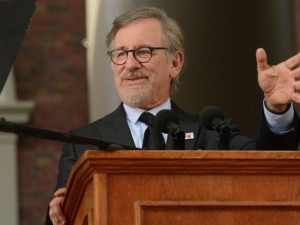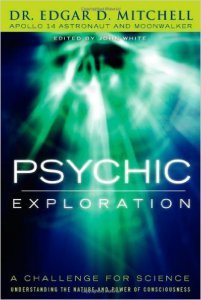Cynthia Sue Larson's Blog, page 11
July 20, 2016
3 Qualities of Genuine Mandela Effects
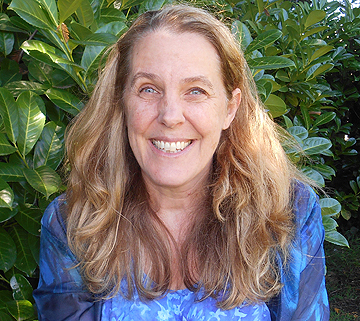
Which Mandela Effects have you seen that are the real thing? Which have you seen that aren’t?
If you’ve heard about the Mandela Effect, you might be wondering how to tell when you’re face-to-face with a genuine Mandela Effect, and when you’re not, and the truth about how you can tell might surprise you!
The Mandela Effect demonstrates that facts and histories can change, and not everyone remembers things the same way. I’ve received emails from people writing, “I think I’ve experienced a Mandela Effect, but I’m not sure,” which indicates many people would like to know how we can tell when we’ve encountered a genuine Mandela Effect experience–or not.
There is understandably some confusion on this matter, mostly because open-minded skeptics and smug scoffers both at various times make the case that as French mathematician Pierre-Simon Laplace once wrote, “The weight of evidence for an extraordinary claim must be proportioned to its strangeness.” And it doesn’t seem too unreasonable to expect that we ought to be able to provide evidence for each proffered example of the Mandela Effect, if what we’re experiencing is real, right?
Ironically, one of the main reasons controversy exists about the Mandela Effect has to do with the fact that most any time physical evidence can be found of an instance suggesting parallel realities, at some point we will likely discover that this case of Mandela Effect was actually not the real deal.
So How Can We Tell the Difference?
My preferred explanation for all this is that we are observing quantum phenomena on the macroscopic scale, and there is no ‘von Neumann cut’ where we can start disregarding quantum effects. Quantum discontinuities can (and do) occur at every level. The way we are noticing these kinds of quantum jumps, reality shifts, alternate histories, and Mandela Effects is that we are finding examples where our memories do not match the official historical record of facts–the facts appear different than we remember, and there is a sense that things ‘have always been this way.’ Here is a simple three-step test you can use to discern whether something is the genuine Mandela Effect, or not:
(1) The Only “Proof” is Our Memories
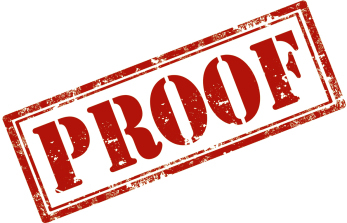 Just like Chief Seattle’s excellent advice for wilderness travelers to “take only memories, leave only footprints,” it seems travelers between parallel possible worlds are able to do only that. While evidence of different memories will likely be dissatisfactory to skeptics and unacceptable to scoffers, our memory actually is the only evidence people are able to find of Mandela Effect examples when they are the genuine article. While memories have gotten a bum rap for years as being unreliable, it’s worth considering that some of the reasons that memories have been noted for not corresponding to historical recorded facts just might be that the Mandela Effect has been happening since before the dawn of human recorded history–which is what I believe is actually true. Now this is not to say that every time someone mis-remembers something or is confused as to what they remember we’re encountering a Mandela Effect–but it is to say that every one of those times actually might represent an example of the Mandela Effect in action.
Just like Chief Seattle’s excellent advice for wilderness travelers to “take only memories, leave only footprints,” it seems travelers between parallel possible worlds are able to do only that. While evidence of different memories will likely be dissatisfactory to skeptics and unacceptable to scoffers, our memory actually is the only evidence people are able to find of Mandela Effect examples when they are the genuine article. While memories have gotten a bum rap for years as being unreliable, it’s worth considering that some of the reasons that memories have been noted for not corresponding to historical recorded facts just might be that the Mandela Effect has been happening since before the dawn of human recorded history–which is what I believe is actually true. Now this is not to say that every time someone mis-remembers something or is confused as to what they remember we’re encountering a Mandela Effect–but it is to say that every one of those times actually might represent an example of the Mandela Effect in action.
(2) Side-By-Side Physical Examples Don’t Occur
One of the identifying hallmarks of the Mandela Effect is that when our attention is riveted by a possible case of Mandela Effect, we will not find simultaneous physical proof showing other realities we might remember. For example, if we recall the song on Mister Rogers Neighborhood to include Mr. Rogers singing, “It’s a beautiful day in the neighborhood,” we will only now be able to find the lyrics being sung “the way it’s always been sung,” which at this time seems to be, “It’s a beautiful day in this neighborhood.” There will not be both versions of the song in existence, but rather just the one version–which is precisely why so many people are mystified by the change. When testing to see whether a possible example of the Mandela Effect is genuine, and we turn up a strong presence of side-by-side examples of, for example, a corporate logo in transition–then we acknowledge that this is not an example of the Mandela Effect.
 (3) We Might Notice Flip-Flops
(3) We Might Notice Flip-Flops
While it is sometimes possible to physically witness evidence of more than one reality, such experiences will not occur concurrently, with evidence of both presenting at the same time. Genuine Mandela Effect examples of reality shifts (that are seemingly happening randomly) and quantum jumps (that might be associated with miraculous instant changes) can sometimes be experienced as “flip-flopping” back and forth between different possible realities. Some examples of this kind of thing that I’ve personally witnessed include: business hours changing back and forth between “always being open until 10pm” or “always being open until midnight; the rain gutters on my neighbor’s house always having had leaf guards, or never having had leaf guards; our elderly dog developing visible cataracts in both eyes or not having visible cataracts. These are just a few examples–and in each case, eventually one of the possible realities was selected as “always having been true.” During these times of flip-flopping realities, we will not see side-by-side examples of concurrent physical realities existing simultaneously, but rather just one or another–even though we know we’ve seen the other realities.
Why Our Current Scientific Method Can’t Provide “Proof”
Our existing scientific method was founded on old assumptions that cannot function when dealing with the reality of quantum physics. When quantum mechanics first arrived on the scene around 1900, many scientists fervently hoped they would not need to deal with any revision to the way scientific studies are conducted. Quantum weirdness such as “spooky action at a distance,” quantum tunneling, quantum teleportation, quantum superposition of states, and quantum coherence were all considered part of the weird, wonderful world of the realm of the very, very small, with nothing whatsoever to do with the ordinary human experience of the world. The built-in assumptions of the classical scientific method can’t stand up to quantum physics, yet they have remained largely unquestioned and unrevised now for over a hundred years.
Material realism’s first assumption of strong objectivity asserts there is an objective material universe “out there” that is independent of us. For example, we hope to understand chemistry by studying the interaction of chemicals, and physics by studying how physical bodies interact … yet we do not consider ourselves to be in any way entangled in what we are observing. We often imagine that we can be perfect voyeurs, having no appreciable impact whatsoever on the subjects of our study. The validity of this assumption becomes questionable when we see how inextricably connected the observer is to quantum physics experiments; the observer plays the decisive role in determining what is observed.
The second assumption of causal determinism is the familiar idea that once we understand the forces causing change in a given system, we can accurately predict the effect those causes will have. We would expect to be able to predict what would happen when we roll a marble towards a bunch of other marbles, if we knew where all the marbles were and the position and speed of the striking marble. As we will see in this chapter, quantum physics challenges our ability to understand all that we need in order to make such predictions, since the uncertainty principle does not allow us to know both an object’s velocity and position. We cannot accurately make predictions in the realm of quantum physics, other than having a sense of statistical probability for certain outcomes. Werner Heisenberg proposed in his uncertainty principle that quanta must be described as waves while they travel and particles when they are viewed, and Niels Bohr added that it’s impossible to specify the observed atom’s wave function separately from it’s observing electron. Chaos theory is another challenge to causal determinism, as the universe appears to behave unpredictably at its very core.
The third assumption of locality in material realism is the concept that objects exist independently and separately from one another. We study each experimental subject with the assumption that it is separate from other objects so we can conduct different experiments in different conditions and believe that we are studying an isolated, independent subject. At odds with this assumption is the observation of some twin quantum particles that have shown separated objects can and do remain in synchronization with each other across time and space … continuing to correlate their angles of spin with each other. This was first considered in the “Einstein-Podolsky- Rosen paradox,” later verified in the laboratory, and mathematically demonstrated by Bell’s theorem.
Assumptions of material or physical monism and epiphenomenalism assert that subjective mental phenomena are simply epiphenomena of matter. In other words, the material world is the primary mover and shaker, and things we think we observe through our minds are irrelevant, “immaterial” inconsequential side effects. Quantum physics shows us the weakness of these assumptions when we consider how observers who take quantum measurements collapse quantum waves at the moment they make that observation.
Now that we know that the assumptions forming the basis for material realism are so shaken by findings of quantum physics experiments, it’s time to start refining and revising the above assumptions of material realism into assumptions that include mind along with matter, and that better agree with the findings of quantum physics.
Gotta Catch ’em All!
At this time when one of the more popular games is Pokemon Go, with people streaming into parks, cell phones in hand, hoping to see and capture Pokemon “pocket monsters,” people are playing a real-life game of finding possible samples of the Mandela Effect all around. Corporate logos often come up as possible Mandela Effect examples, providing excellent test cases by which to see if they pass the Mandela Effect Test.
You can see the YouTube summary of this blog post here: https://youtu.be/HBCLYPiUwL8
___________________________
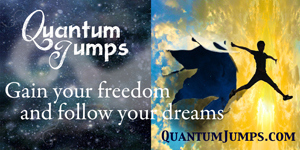 Cynthia Sue Larson
is the best-selling author of six books, including Reality Shifts and Quantum Jumps. Cynthia has a degree in Physics from UC Berkeley, and discusses consciousness and quantum physics on numerous shows including her Living the Quantum Dream radio show, the History Channel, Coast to Coast AM, the BBC and One World with Deepak Chopra. You can subscribe to Cynthia’s free monthly ezine at: http://www.RealityShifters.com
Cynthia Sue Larson
is the best-selling author of six books, including Reality Shifts and Quantum Jumps. Cynthia has a degree in Physics from UC Berkeley, and discusses consciousness and quantum physics on numerous shows including her Living the Quantum Dream radio show, the History Channel, Coast to Coast AM, the BBC and One World with Deepak Chopra. You can subscribe to Cynthia’s free monthly ezine at: http://www.RealityShifters.comRealityShifters®


July 3, 2016
The Mandela Effect has been with us longer than we thought
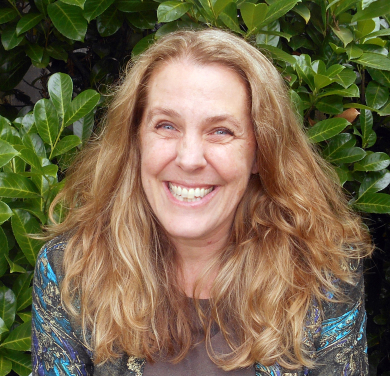 What are your earliest Mandela Effect memories?
What are your earliest Mandela Effect memories?
The Mandela Effect demonstrates that facts and histories can change, and not everyone remembers things the same way. I’ve received emails from people writing, “I’ve noticed these changes for years, but only just now found out thousands of other people are noticing the same changes,” which gets me wondering how long the Mandela Effect has been around.
Different people pay attention to different things, so we’ll not all be equally impressed by the same changes in history, and sometimes it takes a while before we notice something strange is going on–and has been going on for a long time. There is a tendency once we start noticing something–such as that history sometimes changes–we start seeing examples of it more often. I’ve also noticed that being with others who also notice reality shifting tends to increase our awareness of it. What’s changed since the Mandela Effect became a popular meme is that collectively we now have a mental “File” to label such incidents with, other than ‘we must have been mistaken; that’s so weird.’ Now people like George Clooney and Julia Roberts and Gwen Stefani DO have something to refer to other than “that’s so weird,” when they notice, as they recently did, that the ending of the song, “We are the champions” by Queen has changed.
My preferred explanation for all this is that we are observing quantum phenomena on the macroscopic scale, and there is no ‘von Neumann cut’ where we can start disregarding quantum effects. Quantum discontinuities can (and do) occur at every level.
Bigger than Mandela
One of the main reasons the “Mandela Effect” is grabbing peoples’ attention is that it is bigger than Mandela. The “Mandela Effect” shows those of us who’ve experienced it that facts change, and histories change. Not everyone remembers things the same way, and sometimes we also notice things change from what we remembered, and then change back again–sometimes flip-flopping more than once or twice.
No Return to Classical Reality
We can look to quantum physics for an explanation as to what is going on when we find more examples of the Mandela Effect. Rather than there being some imaginary line of demarcation where quantum weirdness no longer occurs, some physicists now suggest that quantum logic might hold true at all levels. Rather than ignoring such troublesome quantum phenomena as superposition of states and entanglement by sweeping them under the von Neumann cut, we instead need to consider the possibility that sometimes we will see macroscopic evidence of quantum phenomena in our daily lives.
No Conspiracy Required
The existence of alternate pasts was predicted by scientists such as Stephen Hawking, who has sought evidence of vibratory signatures of many possible ‘big bangs,’ for example. If and when you ever personally experience the presence of multiple possible pasts, such as some college students witnessed first-hand when looking at their own hand-written journal notes about where they were and what they were doing when the Challenger space shuttle exploded–then you might reconsider the notion of a news media or government conspiracy.
CERN came along after the fact, from the standpoint that first nations peoples have long described oral histories about how these same sorts of things (so-called “Mandela Effect”) have been happening since the dawn of time. We can see evidence of the Mandela Effect in years before we heard of it, when we remember times such as I recall having happened to me back in the 1970s, when I wanted to hear a song that I’d been hearing a lot on the radio. I couldn’t find the song any more, and it was as if it had completely disappeared without a trace. Then, many months later, I did hear the song being announced by a radio station as ‘likely to be a big hit’ as they bragged they were amongst one of the first stations able to play it. I heard this and thought to myself, “What!?! This song was being played almost nonstop by many stations earlier this year!” So if you’ve ever seen a movie or TV show or heard a song or read a book before it came out, you’ve had an earlier experience with the Mandela Effect.
Quantum Mechanics Forbids a Single History
Thomas Kuhn wrote that a paradigm defines “the practices that define a scientific discipline at a certain point in time.” When we notice that there is a strong possibility we are witnessing macroscopic signs of quantum phenomena as some of us recognize that we’ve been experiencing ‘glitches’ and shifts in reality for years, it becomes clear that rather than a conspiracy, we’re dealing with a radical re-visioning of reality. Thomas Kuhn described how there are four basic ways that a new paradigm influences the scientific process, because paradigms dictate: what is studied and researched, what types of questions are asked, the exact structure of the questions asked, and how research results are interpreted. Thanks to the work of physicists such as Stephen Hawking and Thomas Hertog suggesting back in 2006 that we might live in a “top down” universe which prohibits single histories, people are increasingly becoming more familiar with the idea that we exist in a superposition of states–such as in a holographic multiverse, where we can sometimes experience various other possible realities. Nature magazine reported Thomas Hertog stating,
“Quantum mechanics forbids a single history.”
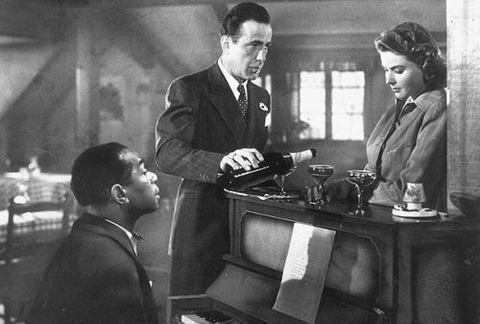 Finding Early Historical Examples
Finding Early Historical Examples
We can find early examples of the Mandela Effect easily enough, by searching through books, newspapers, magazines and research papers with keywords such as “misremembered,” “collective misremembering,” “famously misremembered,” and “historical misremembering.” We can ask elders what kinds of “mis-rememberings” were common in their youth, to hear such examples as differences in historical dates or names, or differences in what people at the same event had heard someone say, for example. We can thus find such examples as a change in dialogue in the 1942 movie Casablanca to “Play it again, Sam,” a phrase which currently is not spoken in the film.
Mandela Effect’s Invitation to Us
The Mandela Effect is inviting us to enter into a new Quantum Age, which also happens to be a new age of awareness of our true identity as Consciousness. People have an opportunity now to become aware that we are not our bodies nor our thoughts nor our feelings–but rather, our true selves and true identities are the observers of our bodies, thoughts and feelings. And as we become aware of this to the point we increasingly observe evidence of this (through witnessing alternate realities and alternate histories), we gain the ability to recognize the primacy of consciousness as creator of experience. I strongly recommend everyone develop a habit of asking, “How good can it get?” in every situation, in order to help ensure best possible experiences–for truly this remarkably unlikely universe can become even more fine-tuned than we’ve yet experienced.
You can see the YouTube summary of this blog post here: https://youtu.be/bMsStumSrRE
___________________________
 Cynthia Sue Larson
is the best-selling author of six books, including Quantum Jumps. Cynthia has a degree in Physics from UC Berkeley, and discusses consciousness and quantum physics on numerous shows including her Living the Quantum Dream radio show, the History Channel, Coast to Coast AM, the BBC and One World with Deepak Chopra. You can subscribe to Cynthia’s free monthly ezine at: http://www.RealityShifters.com
Cynthia Sue Larson
is the best-selling author of six books, including Quantum Jumps. Cynthia has a degree in Physics from UC Berkeley, and discusses consciousness and quantum physics on numerous shows including her Living the Quantum Dream radio show, the History Channel, Coast to Coast AM, the BBC and One World with Deepak Chopra. You can subscribe to Cynthia’s free monthly ezine at: http://www.RealityShifters.comRealityShifters®


June 25, 2016
My Mandela Effect Life
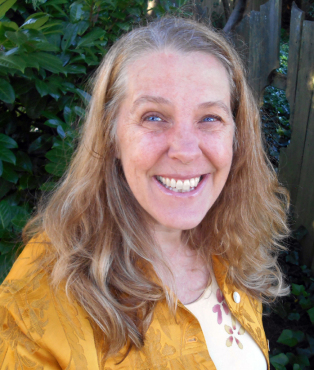 Why Do I Devote My Career to Researching the Mandela Effect, Reality Shifts, and Quantum Jumps?
Why Do I Devote My Career to Researching the Mandela Effect, Reality Shifts, and Quantum Jumps?
I’ve been delighted to see the “Mandela Effect” rocket from being a fairly obscure topic in 2010 to a matter of steadily increasing attention in 2016, since I’ve devoted my career to researching discontinuities, shifts, and jumps in reality. In case you’re wondering why I dedicate my life’s work to these topics, here is a short explanation of why I do the work I do.
Witnessing Mind-Matter Influence
I’ve noticed mind-matter interaction since childhood, though I noted this perspective was not mainstream in California in the 1960s when I was growing up. When I was a young girl watching rain falling in the garden outside our house, I noticed that when I was in a certain state day-dreamy state of mind, I could think “Stop rain,” and the rain would stop, and “Start rain,” and the rain would start. After testing this to my satisfaction several times, I ran with great excitement to show this discovery to my mother, who greeted my announcement with a sigh of resignation and evident apathy. Unable to demonstrate for my mother what had been working perfectly just moments earlier, I recognized the power that each of us has to effect mind-matter influence within supportive ‘zones.’ I subsequently made sure that I was quiet about it any time I helped our family’s car to start (back in the 1960’s, it was a relatively common occurrence for cars to not start every time), or other such things. Clearly, mind-matter interaction was not considered to be possible–yet in my daily personal life I constantly found it to be one of the most consistently reliable and supportive pillars upon which I can dependably rely.
In retrospect, I can see I had numerous “Mandela Effect” type experiences while growing up, such as the time in the 1970s following one of my family’s vacations to beautiful Dal Lake, India, when the furniture my parents had ordered finally arrived in California, was assembled and fitted with custom-made glass tops. I reminded my parents that they had promised the woodcarvers at Dal Lake that they would send photographs of the tables in our new home. My parents seemed surprised and confused at my insistence they should take and sent photographs, and I became confused, too, since my parents don’t lie, and always keep their promises. I knew I wasn’t remembering incorrectly, yet I trusted they were not lying to me, either–so I ‘let it go’ without forgetting this bizarre difference in remembered histories had occurred.
Thanks to growing up in a family dedicated to visiting some of the most remote areas in the world before they were forever changed by western expansionism, I spent several months each year of my childhood in parts of the world untouched by western ideas and civilization, able to experience firsthand the way I can communicate directly with people, places and things through intention, thoughts and feelings. And thanks to my close relationship with my most spiritual family member, my maternal grandmother, I gained a clear sense of the reality of unseen angelic and divine realms. My grandmother was a woman of exceptional faith, who frequently conversed with me about spirituality, angels, and God.
My 1982 Physics Degree from UC Berkeley
One of the main reasons I obtained a degree in physics from UC Berkeley was to get closer to the heart of the true nature of reality, after observing mind-matter interaction since childhood. Thanks to my lifelong fascination in the true nature of reality and consciousness, I decided the closest thing to a degree in those topics would be Physics, so I applied to and was accepted to the Physics program at UC Berkeley in the 1980s, and I especially loved my quantum physics classes. I am honored to have received a degree in Physics from UC Berkeley.
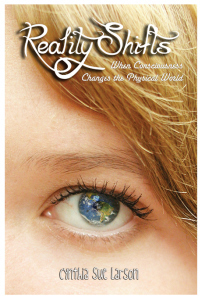 Searching for Reality Shifts in 1994
Searching for Reality Shifts in 1994
In 1994 I experienced a surge in what at the time I called ‘reality shifts,’ involving noticing things appearing, disappearing, transforming and transporting, as well as changes in the experience of time. In the process of exploring this topic and through my intention to experience a wide variety of these shifts, I found myself quickly doing exactly that. I observed many reality shifts without confirmation or validation from other witnesses, but found that shared reality shift experiences to be more enjoyable, since they provided the opportunity to discuss what happened. My searches for information on this topic across the very new world wide web came up empty as I began writing my book, Reality Shifts: When Consciousness Changes the Physical World to describe my observations of celebrities and a pet cat having been reported dead, and subsequently being observed to be very much alive. I included descriptions of how a bird feeder changed without anyone touching it between being empty and full, how the material of a jacket changed without anyone modifying it, and how a children’s book illustration from a book I read to my daughter every week changed to something completely different. Reality Shifts includes first-hand reports of conversations being remembered differently by people involved, and about a person’s name vanishing off a conference speaker’s list between the time of sitting down one morning and a subsequent break. Also included is a description of repeating events, similar to what people would later recognize as a ‘glitch in the Matrix.’ I published the first edition of Reality Shifts in 1999 in a three ring binder, which I made available to people attending my talks and workshops, and later sold through CafePress.
Starting RealityShifters Website and Ezine in 1999
The first version of what came to become the RealityShifters website began at thirdage.com in 1998, before the website had its official name. I chose the name ‘realityshifters’ after prompting on 17 November 1999 from Stein Online radio show host, Elliot Stein, in response to his request that I have a shorter, more easily remembered and spoken website URL. The first RealityShifters news ezine was sent out as an email to dozens of people who had signed the guestbook on my thirdage website, and I added new subscribers one by one, sending each month’s issue out as a regular email until the number of subscribers reached about 700. The RealityShifters ezine now reaches over 8,000 subscribers each month, and all issues are posted online at the RealityShifters News page on the realityshifters site.
The Power of Asking “How Good Can it Get?”
I’ve been writing about and encouraging people to ask the question “How good can it get?” since I first mentioned it in an article published in August 2000. The big idea behind asking this question is that when we ask, “How good can it get?” we change our perspective on this world, leaving behind petty differences and bridging the gap between the physical and spiritual worlds. Simply put, this question has the power to transform not just our perspective and the future, but it can (and often does) also influence the past. When we recognize the growing body of evidence supporting these ideas of the power of changing our subconscious narrative, we can better appreciate the power of asking my favorite question, “How good can it get?” in every situation, every day. Together, we can re-frame the global narratives of the world, enjoying getting the answers to a question we would all actually enjoy receiving the answer to.
Seeking Scientific Answers
My quest for scientific answers behind the Mandela Effect, reality shifts, and quantum jumps has been the foundation of my work as a life coach and author working in this field since 1999. As I recently wrote in a research paper I presented at the Foundations of Mind, Primacy of Quantum Logic in the Natural World,
While we have long presumed quantum logic to operate either alongside or within the classical realm, we stand to benefit from contemplating classical theory and physics as a special case within the bigger quantum reality. This paper finds support for the view of the quantum logicians who assert quantum logic to be the most comprehensive deductive logic. This is demonstrated by the derivability of quantum theory from one additional fundamental axiom beyond that required for deriving classical theory, and evidence that some fundamental aspects of quantum physics can never admit a classical understanding. Recognition that classical theory and logic is a ‘special case’ subset of the greater quantum whole invites us to completely reassess our assumptions regarding the way we view the world and what we consider to be ‘logical.’
I am delighted to have received this statement of recognition from one of my favorite quantum physics professors at UC Berkeley, Dr. George Trilling, who wrote to me in June 2014, “From looking at your accomplishments, your knowledge of physics has served you well. My congratulations on your achievements.”
Paradigm Shift Evident in the Mandela Effect
The Mandela Effect is stirring strong emotional reactions in people who, for the first time, are startled to witness their own first-hand experiences of reality shifts, such as celebrities previously reported dead being observed to be very much alive again–including the now-famous example of Nelson Mandela being observed by many to now have died twice.
The remarkable thing about the rise of the Mandela Effect is that for the first time in recorded history, groups of people are agreeing that they collectively recall different histories. This is significant because it marks the beginning of a paradigm shift in our worldview with regard to a ‘static’ sense of historical facts, to one encompassing a new view that sometimes, facts change. This paradigm shift arrives at a point in time when some scientists seek evidence of the many worlds of quantum physics being one-and-the-same as the multiverse.
I’m excited to help facilitate humanity’s paradigm shift toward a realization of the primacy of consciousness and quantum logic in the world, through my free YouTube videos, RealityShifters website, RealityShifters ezine, blog, articles, Living the Quantum Dream radio show, and my books and life coaching.
You can see the YouTube summary of this blog post here: https://youtu.be/bMsStumSrRE
___________________________
 Cynthia Sue Larson
is the best-selling author of six books, including Quantum Jumps. Cynthia has a degree in Physics from UC Berkeley, and discusses consciousness and quantum physics on numerous shows including her Living the Quantum Dream radio show, the History Channel, Coast to Coast AM, the BBC and One World with Deepak Chopra. You can subscribe to Cynthia’s free monthly ezine at: http://www.RealityShifters.com
Cynthia Sue Larson
is the best-selling author of six books, including Quantum Jumps. Cynthia has a degree in Physics from UC Berkeley, and discusses consciousness and quantum physics on numerous shows including her Living the Quantum Dream radio show, the History Channel, Coast to Coast AM, the BBC and One World with Deepak Chopra. You can subscribe to Cynthia’s free monthly ezine at: http://www.RealityShifters.comRealityShifters®


June 2, 2016
The Power of Reframing Subconscious Narrative
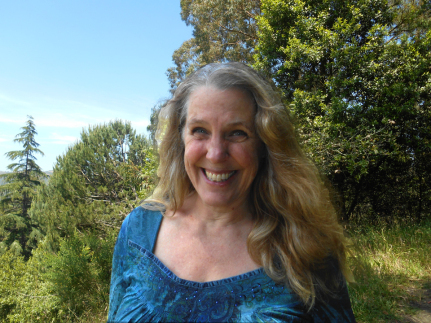
Cynthia Sue Larson
Have you noticed how two people can experience the same or similar circumstances, yet they often come away with very different viewpoints regarding what happened? Most of us experience this sort of puzzling discrepancy when we were children and our caretakers described a different view of the world than what we felt had transpired. Before we learned any language, we humans automatically construct narratives by which to make sense of the world. These narratives help us develop social cognitive functioning from infancy, where we differentiate between those who are possibly helpful or harmful.
 Reframing Narratives and Emotions
Reframing Narratives and Emotions
I’ve been enjoying reading Emotions Revealed by Dr. Paul Ekman, in which he describes some fascinating research including how our emotional responses to various situations can change based on our interpretation of what is going on. We humans have muscles that move in synchronization with various emotions, and the resulting facial expressions have been proven to be recognized and understood across all cultures and countries in the world. Additionally, when we make various expressions by moving particular muscles associated with various emotions, we feel the very emotions that are associated with moving those muscle groups. Part of the reason that humans depend upon accurately reading and understanding facial expressions (including micro-expressions and suppressed expressions) is that our safety and wellbeing requires us to constantly be aware of potential dangers in our environment–so we must be able to know in a microsecond whether a nearby human is showing an expression of fear or surprise, in order that we may respond quickly enough to potentially dangerous situations. Despite the fact that there is a clear relationship between globally recognizable emotions in the form of facial expressions, surprisingly, most people do not receive training in accurately interpreting facial expressions with their variety of associated emotional meanings. Thanks to Dr. Paul Ekman’s work as he describes in Emotions Revealed, we can see photographs of how people look when they are moving precise muscle groups on their faces and feeling various blends of emotions–including when they are masking or concealing deeper underlying emotions with others.
Since our emotions are primary motivating forces for most everything we do, learning how they establish a subconscious narrative for what we believe to be occurring provides us with a foundational basis for what we can do to better understand–and perhaps change–that story line. In this way, we can, for example, recognize that what we initially took to be an overly critical boss might actually care a great deal about us, and the criticisms might have more to do with our boss being afraid we might quit and leave than feeling we aren’t doing our job well enough. We can thus better appreciate the underlying subconscious narratives going on in all the people around us as well as in our own lives, allowing us to rise above the “little stuff” as we expand our sense of self and begin to appreciate the Big Questions, such as, “Who am I?” and “What am I doing here?” and rise above the day-to-day practical matters required for survival.
Reframing Narratives and the Placebo Effect
Excellent examples of benefits we can experience from reframing our subconscious narratives can be found in the Placebo Effect. Recent placebo studies are reporting that people can experience improvements in a wide variety of areas, including: reduction of pain, improvement in vision, improved test scores, increased levels of confidence, increased mobility in people with knee problems, reduction of Parkinson’s disease symptoms, and much more–from such things as supportive remarks, ‘power postures,’ sham surgeries, sugar pills and other placebos with no known curative powers. Researchers have even found that we cognitively benefit from placebo sleep, by telling ourselves we’ve slept well.
Some exciting news this year is that placebos are helping people relieve suffering from IBS and migraines in studies that are showing amazingly promising results–even when those receiving placebo treatment are told, “the treatment you are getting is a placebo.” While scientists in research centers such as at Harvard’s Program in Placebo Studies still seek the underlying mechanism responsible for people experiencing statistically significant improvements in a multitude of different ways, it’s becoming clear that the Placebo Effect is real, substantial, and somehow involves our subconscious beliefs–and narratives–about what we feel is happening in our lives.
And if it weren’t amazing enough that placebos can be effective even when people know they are “just receiving a placebo,” and not an actual surgery or medical intervention of some sort–in America, the Placebo Effect is increasing in efficacy over time. The percentage of people in placebo groups experiencing noticeable changes is going up decade by decade–possibly due to longer clinical trial periods, and perhaps also thanks to the requirement in such placebo studies that researchers tell study participants the truth regarding the remarkable efficacy of placebo treatments.
When film director Steven Spielberg gave his 2016 commencement speech at Harvard, he said, “We have to tell our own stories.” Spielberg went on to point out the importance of how each of us reaches character-defining moments in our lives in which we can hear our internalized voices of authority from our parents, teachers, bosses, and spouses indicating what we “should” do–as well as the quieter intuitive whispers and internal voices indicating what we “could” do.
In the course of working with clients as an intuitive life coach, I frequently delve into “what if” possibilities, encouraging my clients to heed the call of their hearts’ desires and feel the pull of their possible selves having the times of their lives. Simply imagining there may be another possible me and another possible you who are standing up for what we believe in, facing our fears, and pursuing our dreams is the first step in recognizing that it’s never too late to live a happy life.
No matter what situation we may find ourselves in, it is always possible to step back and observe ourselves and all others from a more expansive point of view from which we can reframe the narrative and ourselves. This kind of reframing provides us with an opportunity by which we can review memories of what we recall from past events as well as envisioned possibilities in the future–and this reframing is hardly the passive activity it might at first seem, but indeed quite possibly the most revolutionary and powerful action any one of us can ever make.
How Good Can it Get?
When we recognize the growing body of evidence supporting these ideas of the power of changing our subconscious narrative, we can better appreciate the power of asking my favorite question, “How good can it get?” in every situation, every day. Together, we can re-frame the global narratives of the world, enjoying getting the answers to a question we would all actually really enjoy getting the answer to.
You can see the YouTube summary of this blog post here: https://youtu.be/Yvs2cjTqeV0
___________________________
 Cynthia Sue Larson
is the best-selling author of six books, including Quantum Jumps. Cynthia has a degree in Physics from UC Berkeley, and discusses consciousness and quantum physics on numerous shows including the History Channel, Coast to Coast AM, the BBC and One World with Deepak Chopra. You can subscribe to Cynthia’s free monthly ezine at: http://www.RealityShifters.com
Cynthia Sue Larson
is the best-selling author of six books, including Quantum Jumps. Cynthia has a degree in Physics from UC Berkeley, and discusses consciousness and quantum physics on numerous shows including the History Channel, Coast to Coast AM, the BBC and One World with Deepak Chopra. You can subscribe to Cynthia’s free monthly ezine at: http://www.RealityShifters.comRealityShifters®


May 27, 2016
Foundations of Mind III conference: Science as if Being Mattered
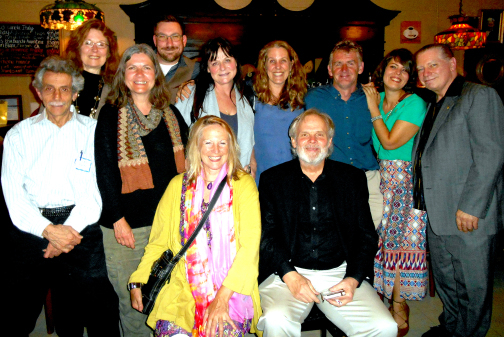
Some presenters and attendees at Foundations of Mind III
The Foundations of Mind III (FOM3) conference took place in Berkeley May 18-20, 2016, featuring presentations by Menas Kafatos, Fred Alan Wolf, Edward Frenkel, Leslie Combs, Henry Stapp, Jacob Needleman, Arnaud Delorme, Peter Duesberg, Glenn Hartelius, Shelli Joye, Beverly Rubik, Judy Gardiner, Wolfgang Baer, Seán Ó Nualláin, Cynthia Sue Larson, Ashok Narashimhan, Neil Theise, Jack Engstrom, Glenn Aparicio Parry, and many more. With two full days of conference proceedings, this year’s conference was a veritable feast of interdisciplinary ideas, wisdom and information from around the world.
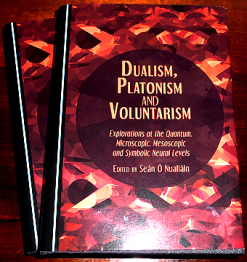
The first Foundations of Mind book
The FOM3 conference happily coincided with the release of the first Foundations of Mind book, Dualism, Platonism, and Voluntarism, edited by Seán Ó Nualláin. This book features discussion and dialogue with Henry Stapp and Walter Freeman, among others, and is now available for purchase through the publisher’s website.
Videos from the FOM3 conference presentations will be available through the Foundations of Mind website, and papers will be published in the future, too. People registered through Foundations of Mind are joining in several threads of on-going conversations begun at the conference, and moving forward to explore topics of the quantum paradigm, consciousness, biosemiotics, and higher education.
Honoring Walter Freeman
The remarkable lifetime achievements of Walter Freeman were honored at the start of this year’s conference, with his certificates and diploma on display. Melanie O’Reilly read some words of remembrance written by Seán Ó Nualláin, who got to know Walter while was a visiting scholar in Walter Freeman’s lab at UC Berkeley.
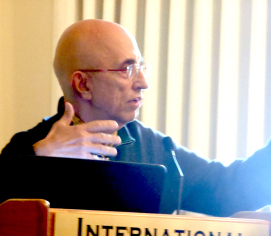
Menas Kafatos
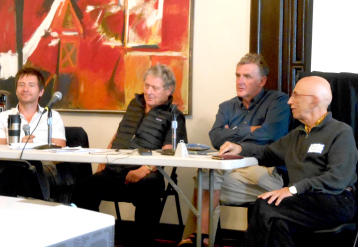
Edward Frenkel, Henry Stapp, Seán Ó Nualláin, and Menas Kafatos
The Nature of Consciousness
Menas Kafatos chaired a session on consciousness, featuring talks by: Menas Kafatos, Arnaud Delorme, Glenn Hartelius, Henry Stapp, Edward Frenkel, Ashok Narasimhan, Neil Theise, Shelli Joye, and Leslie Combs. Arnaud Delorme discussed his work with Dean Radin at the Institute of Noetic Sciences involving experimental approaches to studying possible nonlocal properties of consciousness.
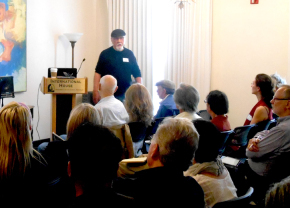
Allan “Leslie” Combs
Glenn Hartelius discussed the challenges of measuring consciousness. Henry Stapp presented his thoughts about quantum mechanics and the role of the mind. Edward Frenkel called for ethics while discussing artificial intelligence and reasons of the heart. Menas Kafatos talked about fundamental awareness and the foundation of the universe. Ashok Narasimhan explained how we can understand consciousness through qualitative content. Neil Theise encouraged us to think about fundamental awareness and the self-organizing universe. Shelli Joye outlined the Pribram-Bohm holoflux theory of consciousness. Leslie Combs delved into the real hard problem of consciousness. Menas Kafatos led a spirited panel discussion that included Seán Ó Nualláin, following individual paper presentations.
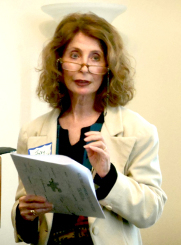
Judy Gardiner
Further Explorations of Consciousness
Judy Gardiner chaired a session that continued our exploration of consciousness, with consideration of patterns, thresholds, and patterns featuring talks by: Judy Gardiner, Jerry Gin, Zann Gill, Ryan Castle, and John Engstrom. Judy Gardiner talked about consciousness without constraint, exploring the ways dreams and real life intertwine, and Aha! moments of revelatory insight can arise. Jerry Gin discussed connections between fundamental pattern and consciousness. Zann Gill talked about fundamental pattern and consciousness. Ryan Castle discussed universal consciousness factors. John Engstrom discussed deep ontic and epistemological parsings.
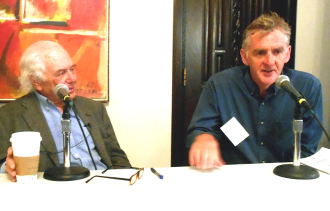
Jacob Needleman and Seán Ó Nualláin
Jacob Needleman asks Questions of Being
Seán Ó Nualláin engaged in a dialogue with Jacob Needleman that many found to be one of the highlights of this conference, delving into the difference between problems we face and how we ask questions that are not related to our immediate concerns. Questions of being such as, “Are we alone in the universe?” “Is there such a thing as God?” “Who am I?” “Why do we live?” “Why do we suffer?” “Is death the end?” “Why is there evil?” “What can we hope for?” “What can we know?” and “How shall we live?” are the great questions that cannot be answered from a problem-solving state of consciousness.
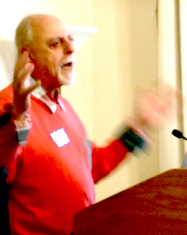
Fred Alan Wolf
Is the Mind/Soul a Platonic Tachyonic Quantum Field?
This was the question posed by Fred Alan Wolf, aka “Dr. Quantum.” Wolf speculates that the mind/soul may be an information field as perhaps envisioned by Plato—the platonic tachyonic quantum field (PTQ)—possibly what the ancients called the Akashic record, interacting with “real” matter fields. Though no material objects manifesting from appropriate quantum fields can travel at or faster than the speed of light, Wolf speculates that the putative platonic mind/soul exists as a PTQ that interacts with such slower-than-light-speed “real” matter through the intermediary of imaginal imaginary-mass objects—tachyons. It is the interaction between the PTQ and matter fields that leads to the physical world and the experience we know as mind/life force.
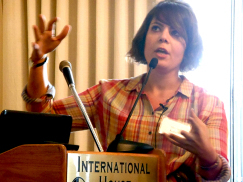
Shirin Kaboli
Neurodynamics and Ecopsychology
Seán Ó Nualláin chaired this panel featuring talks by: Seán Ó Nualláin, Glenn Aparicio Parry, Sebastien Benthall, Anthony S. Wright, Tiff Thompson, and Shirin Kaboli. Seán Ó Nualláin described work done in conjunction with Karl Pribram between 1999 and 2002, modeling the brain as a harmonic oscillator. Glenn Aparicio Parry said a prayer, and spoke of remembering the true source of our consciousness. Sebastien Benthall described how social scientists are coming to terms with technology through critical algorithm studies and computational social sciences. Anthony S. Wright talked about transforming knowledge into wisdom, describing components of wisdom: flow, ethics, empathy, compassion, and flexibility. Tiff Thompson described her work in the field of EEG neurotherapy and psychodynamic psychotherapy. Shirin Kaboli presented her paper on wholeness and the implicate order in materials science, and its implications for consciousness studies.
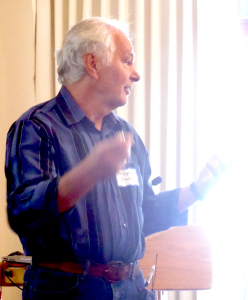
Wolfgang Baer
Observer Inclusive Physics
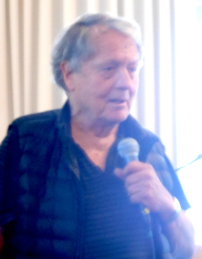
Henry Stapp
Wolfgang Baer chaired this panel seeking to explore the so-called “rose-colored glasses” effect, in which observer characteristics may be inadvertently assigned to observed systems. Papers were presented by: Wolfgang Baer, Henry Stapp, William Bushell, Eric Stanley Reiter, Michelle Kathryn McGee, Cynthia Sue Larson, and Shiva Meucci. Henry Stapp took a fresh look at a way of redesigning Daryl Bem’s ‘sensing the future’ experiment. William Bushell considered how long-term training in highly focused forms of observation potentially influence performance. Eric Stanley Reiter posed a challenge to quantum entanglement through experiment and theory. Michelle Kathryn McGee played with the intersection between matter and energy and light and dark. Cynthia Sue Larson examined evidence of complexity science in quantum phenomena.
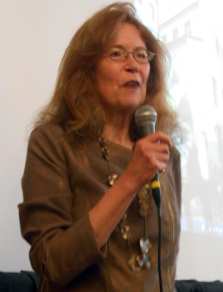
Beverly Rubik
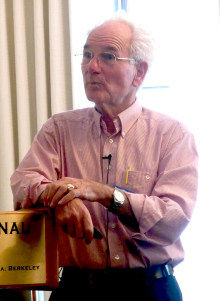
Peter Duesberg
Biology Panel and the Work of Peter Duesberg
Beverly Rubik chaired the biology session, which began with a keynote talk by Peter Duesberg, about his work on aneuploidy in cancer. Duesberg presented a case for carcinogenesis being a form of speciation. Peter argues that cancer involves aneuploidy—dysmorphia at the chromosomal level—rather than simple oncogenes. Beverly Rubik discussed her research on distant healing intention on plant growth. Phillip Shinnick discussed how science can help improve the human condition. Glen Rein described a nonlinear optical model of consciousness. Karla Galdamez discussed her research with photon-eye interaction.
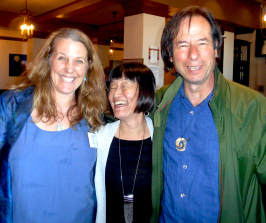
Cynthia Sue Larson, Tomoko Parry and Glenn Aparicio Parry
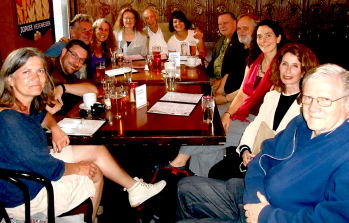
Pre-conference informal social gathering
Interdisciplinary Exchange of Ideas
This third Foundations of Mind conference provided the opportunity for the exchange of ideas with presenters and attendees from many different countries and disciplines over the course of three days during conference proceedings, and at lunch and dinner breaks. From a delightful informal pre-conference gathering Wednesday night at Jupiter, to conference lunches at the International House and a post-conference dinner at Britt-Marie’s, this conference nurtured relationships with old friends and new!
Additional photos and news announcements from the Foundations of Mind III conference can be viewed at the Foundations of Mind facebook page.
___________________________
 Cynthia Sue Larson
is the best-selling author of six books, including Quantum Jumps. Cynthia has a degree in Physics from UC Berkeley, and discusses consciousness and quantum physics on numerous shows including the History Channel, Coast to Coast AM, the BBC and One World with Deepak Chopra. You can subscribe to Cynthia’s free monthly ezine at: http://www.RealityShifters.com
Cynthia Sue Larson
is the best-selling author of six books, including Quantum Jumps. Cynthia has a degree in Physics from UC Berkeley, and discusses consciousness and quantum physics on numerous shows including the History Channel, Coast to Coast AM, the BBC and One World with Deepak Chopra. You can subscribe to Cynthia’s free monthly ezine at: http://www.RealityShifters.comRealityShifters®


May 10, 2016
Earliest Examples of the Mandela Effect

There’s a common assumption in our modern western world that there is one shared reality, that can be factually verified through time and by people all around the world. This assumption may seem so obvious to be not worth mentioning–except that it’s quite possible that it’s untrue.
One of the things I’ve been tracking over the past 17 years by collecting first-hand field reports of reality shifts and alternate histories, is that just as we would likely all agree that there are many possible futures each of us might encounter, there are apparently also many possible pasts. Recent news reports of newly popularized memes such as the so-called “Mandela Effect” reported by Fiona Broome in 2010 and the “Berenstein Bears” reported by a blogger named Reece in 2012 are but two indicators that the public is becoming aware that history doesn’t always remain the same.
Throughout all of recorded western history, any time that people heard of someone having died, only to later find out they were actually still alive, we tended to consider it something akin to simple mistaken identity, such as American author Mark Twain once reported when writing in 1897 in a note to Frank Marshall White, “the report of my death was an exaggeration.” Most people interpreted discussions about someone supposedly having died and later recognized as alive as some kind of confusion, or mistake. Yet according to my research and surveys as reported in my book, Quantum Jumps, 27% out of 567 survey respondents reported that yes, they have “seen dead people and animals alive again.” If so many people are now reporting they’ve experienced this, what are the earliest documented cases of this phenomenon?
Earliest Reported “Mandela Effect” Cases
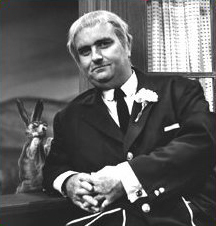
First most-reported “Mandela Effect” (aka “alive again”) celebrity, Bob Keeshan as “Captain Kangaroo”
In a small sample size survey conducted in 2005, I reported that nine celebrities at that time were noted for having been reported dead by reputable sources, only to subsequently be reported very much alive again. In a note we might find interesting now, but that didn’t seem surprising at the time, nobody in the summer of 2005 mentioned Nelson Mandela.
Back in July 2005, the celebrity heading up the “Alive Again” list was Bob Keeshan, an American actor who played a TV character known as Captain Kangaroo. A whopping 26% of those surveyed at that time recalled that Bob Keeshan had died before 2004, and then died again in January 2004. The next most-often remembered “alive again” (aka “Mandela Effect”) celebrities back in 2005 included: Jane Goodall (15%), Larry Hagman (15%), Bob Hope (10%), Jack Palance (10%), Bea Arthur (5%), Ed Asner (5%), Walter Cronkite (5%), and Mariel Hemingway (5%).
Where was Nelson Mandela back in 2005?
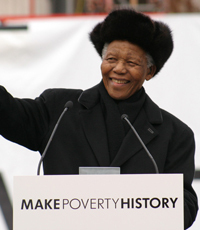 We might well ask, “Why didn’t anyone mention Nelson Mandela being alive again back in 2005 when that first survey was conducted?” which is an excellent question. At that point in time in 2005, neither I nor anyone I surveyed made a point to mention remembering what many of us would later recall–that Nelson Mandela had died many years earlier than his currently recorded official date of death of December 5, 2013. Fiona Broome’s first mention of the Mandela Effect was still five years in the future, and he was not yet on anyone’s radar–including those who were starting to talk about the “Alive Again” phenomenon.
We might well ask, “Why didn’t anyone mention Nelson Mandela being alive again back in 2005 when that first survey was conducted?” which is an excellent question. At that point in time in 2005, neither I nor anyone I surveyed made a point to mention remembering what many of us would later recall–that Nelson Mandela had died many years earlier than his currently recorded official date of death of December 5, 2013. Fiona Broome’s first mention of the Mandela Effect was still five years in the future, and he was not yet on anyone’s radar–including those who were starting to talk about the “Alive Again” phenomenon.
You might think perhaps Nelson Mandela was “lying low” while alive back in 2005, and not making major media appearances–yet according to current history, we find Mandela got huge media coverage in February 2005 when he came out of retirement from public life to give a speech in Trafalgar Square to 20,000 people. Mandela called for action to end ‘unnatural poverty’ in a speech covered by BBC News as well as most all of the major news networks. This is a speech I have no recollection of, as one might expect from someone like me who’d thought up until a few years ago that Nelson Mandela had died decades earlier. So while our current history shows that Mandela remained politically active and publicly visible off and on over the past decades, I’ve been unaware of all these activities unless I look them up and read about them and watch them now–which for me is for the first time.
The Case of the Missing Bolton Dinosaur
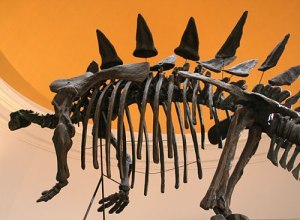 During this same time period when I was conducting the first surveys about the earliest reported incidences of the Mandela Effect, a town in the United Kingdom noticed it seemed to be missing a dinosaur. A full-scale model of a dinosaur was an oft-mentioned favorite memory from the 1960s for many visitors to the Bolton Museum and Art Gallery, as a January 2006 article in The Bolton News describes–yet as of 2006, there was no longer any official record that any such dinosaur existed. This was a matter of importance to the community, since restoring the old exhibit would have saved the museum the time, effort and energy required to obtain a new dinosaur exhibit in 2000. Alan Rushton, leader of the Conservative group on Bolton Council, said: “One of our dinosaurs is definitely missing! Am I supposed to accept that my eyes deceived me, or this enormous dinosaur was a figment of my imagination? I remember as a schoolboy going on visits to the museum and standing in awe, looking at it. I raised the matter when I was on the arts committee but we were never able to find any trace of it.”
During this same time period when I was conducting the first surveys about the earliest reported incidences of the Mandela Effect, a town in the United Kingdom noticed it seemed to be missing a dinosaur. A full-scale model of a dinosaur was an oft-mentioned favorite memory from the 1960s for many visitors to the Bolton Museum and Art Gallery, as a January 2006 article in The Bolton News describes–yet as of 2006, there was no longer any official record that any such dinosaur existed. This was a matter of importance to the community, since restoring the old exhibit would have saved the museum the time, effort and energy required to obtain a new dinosaur exhibit in 2000. Alan Rushton, leader of the Conservative group on Bolton Council, said: “One of our dinosaurs is definitely missing! Am I supposed to accept that my eyes deceived me, or this enormous dinosaur was a figment of my imagination? I remember as a schoolboy going on visits to the museum and standing in awe, looking at it. I raised the matter when I was on the arts committee but we were never able to find any trace of it.”
And Anne Wright, also remembered the seeing the dinosaur when visiting the museum, commenting, “I remember a huge dinosaur standing in the entrance to the natural history section. One day I went in and it was no longer there. Later on, when I asked about it, none of the staff could remember anything about it, but I know I saw it. Now nobody seems to know anything about–it’s bizarre.”
About half of those responding to the Bolton News story remembered the dinosaur that now has no official historical record of ever having existed at the museum, and the other half don’t remember any such thing.
What’s Going On?
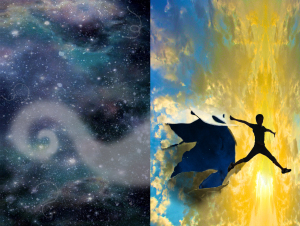 What I’ve been documenting since 1999 are first-hand reports from people noticing changes in reality all around the world. What I’ve noticed over the years is that these reports of people and things appearing, disappearing, transforming and transporting are the very types of phenomena we’d expect to see on the quantum / microscopic scale of the very, very small–yet they’re happening on a grand scale. People are noticing items such as their socks and keys moving around as if by themselves. People are noticing they remember events differently than siblings and friends. And sometimes people notice they’re disagreeing about what happened moments earlier.
What I’ve been documenting since 1999 are first-hand reports from people noticing changes in reality all around the world. What I’ve noticed over the years is that these reports of people and things appearing, disappearing, transforming and transporting are the very types of phenomena we’d expect to see on the quantum / microscopic scale of the very, very small–yet they’re happening on a grand scale. People are noticing items such as their socks and keys moving around as if by themselves. People are noticing they remember events differently than siblings and friends. And sometimes people notice they’re disagreeing about what happened moments earlier.
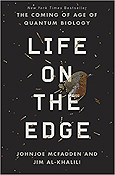 These realizations come forth at the very point in time that humanity enters the new Quantum Age, in which most every field in science now has the word “quantum” in front, including: Quantum Biology, Quantum Cognition, Quantum Cosmology and Quantum Statistics. While quantum logic and phenomena has long been shunted aside as irrelevant (aside from creating nuclear reactors or nuclear weapons), we’re now at the beginning of the “quantum invasion,” as inventors, engineers and scientists strive to be first to build quantum computers.
These realizations come forth at the very point in time that humanity enters the new Quantum Age, in which most every field in science now has the word “quantum” in front, including: Quantum Biology, Quantum Cognition, Quantum Cosmology and Quantum Statistics. While quantum logic and phenomena has long been shunted aside as irrelevant (aside from creating nuclear reactors or nuclear weapons), we’re now at the beginning of the “quantum invasion,” as inventors, engineers and scientists strive to be first to build quantum computers.
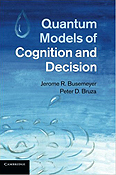 Amidst this new gold rush of our times, scientists are finding that people such as Quantum Biologist Johnjoe McFadden and Quantum Cognitive Scientist Jerome Busemeyer who I’ve featured on my radio show, Living the Quantum Dream, are leading the way in demonstrating how quantum phenomena are occurring all around us in Nature in our everyday lives.
Amidst this new gold rush of our times, scientists are finding that people such as Quantum Biologist Johnjoe McFadden and Quantum Cognitive Scientist Jerome Busemeyer who I’ve featured on my radio show, Living the Quantum Dream, are leading the way in demonstrating how quantum phenomena are occurring all around us in Nature in our everyday lives.
What is becoming increasingly clear is that as we seek a “theory of everything” unifying the classical and quantum realms, it seems to be finding us. And many of the seemingly bizarre properties of quantum physics appear to be everywhere around and inside us, including occasionally making surprise appearances where we least expect them.
How to Record Alternate History Reports
Since people reading about alternate histories and the Mandela Effect often begin to experience increased incidences of shifts in reality, keeping records of what’s observed becomes important. Questions about alternate histories need to include descriptions of several points in time, that include three points in space and time. Such a journal entry would be recorded to include how, “Today, on date and time Z we are recording that at at date and time Y we became aware that apparently some kind of change had occurred at date and time X involving ____________ being different in these ways __________________.”
This article will have a short video summary:
___________________________
 Cynthia Sue Larson
is the best-selling author of six books, including Quantum Jumps. Cynthia has a degree in Physics from UC Berkeley, and discusses consciousness and quantum physics on numerous shows including the History Channel, Coast to Coast AM, the BBC, One World with Deepak Chopra, and her radio show, Living the Quantum Dream. You can subscribe to Cynthia’s free monthly ezine at: http://www.RealityShifters.com
Cynthia Sue Larson
is the best-selling author of six books, including Quantum Jumps. Cynthia has a degree in Physics from UC Berkeley, and discusses consciousness and quantum physics on numerous shows including the History Channel, Coast to Coast AM, the BBC, One World with Deepak Chopra, and her radio show, Living the Quantum Dream. You can subscribe to Cynthia’s free monthly ezine at: http://www.RealityShifters.comRealityShifters®


April 8, 2016
Overcoming Artificial Boundaries
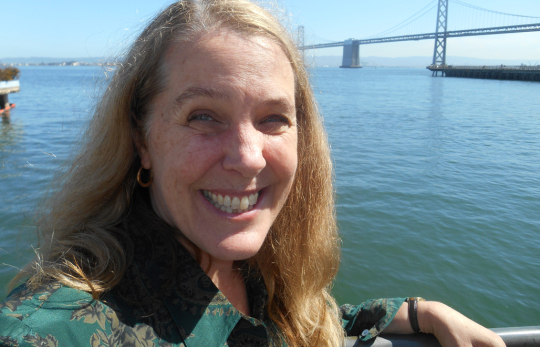
Enjoying lunch with friends in San Francisco the other day, our conversation turned to the way people so often decide on some arbitrary line of demarcation that acts as a boundary we then choose to respect. We thus end up with geographic boundaries for our cities, counties, states, and nations. We have boundaries for races, genders, ages, politics, and religions. We set boundaries for what kind of news and scientific reporting we consider legitimate. These boundaries seem quite real to us when we’re closely involved in whatever is being divided up–but as soon as we get some distance between ourselves and whatever is being divided up, we can find ourselves hard pressed to explain why any particular dividing line was so essential.
While these lines may seem benign, they can contribute to serious problems. One of my friends explained how she’d conducted a search for an African American computer engineer employee a few years ago. She’d thought finding a black programmer would be fairly straightforward, and was surprised to discover that was not the case. When she finally found and hired a young black man, she asked him why he thought there were so few blacks involved in Information Technology. He replied that African Americans, “just don’t have the required skills.” While this young man clearly believed this to be true, my friends and I were aghast at how such a thing could be. Even if young African Americans are not provided with requisite skills to be accepted to college computer science programs—what belief system is contributing to this situation? At some point there must be an artificial line of demarcation—some point where those fit to learn computer programming skills may proceed onward and upward, and all considered to be “unfit” may not.
Why do we feel such a burning need to draw these boundaries—these artificial lines of demarcation? One of my friends pointed out that we could, as John Lennon invites us to do in the lyrics in his song, Imagine, simply choose to walk through those imaginary boundaries–yet the reason most people don’t do just that has to do with a fear of losing control. He summed it up as,
“We set boundaries because of a need for control.”
All of this was on my mind when I received an email from a thoughtful reader, who wrote:
While QM itself gives many observable examples of the fluidity and variability of our realities what is being developed as quantum computing does not. That’s because it has been developed in a “put new wine in old bottles” fashion. It uses binary as base. So in classical computing a bit can be in one of two states 0 OR 1. A qubit can be in one of three states 0 OR 1 OR (0 and 1) – the state of superposition. Of course computers have to be practical so such an approach, limited though it may be, makes sense.
It’s like the cat in the box. The example was given using only alive and dead. But in actuality a superposition can be and usually is more (alive|dead|male|female|tabby|calico|etc) Superposition is the confluence of two or more seemingly discrete states. But our thinking at the moment is strongly binary. Hence our creation of digital as being the foundation for our current approach to computing.
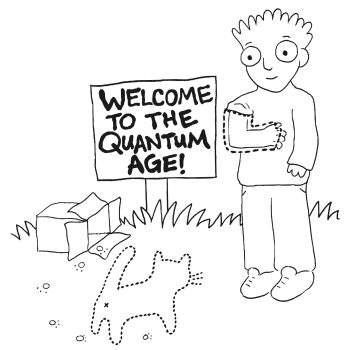
Illustration from the book, Quantum Jumps
I replied to this email message stating that I agreed with the point about there being a bias toward viewing the world with a bias toward binary / classical operations. I love the example of Schrodinger’s cat not simply being alive or dead (which is essentially a throwback to binary either/or classical thinking), but rather “alive, sickly, pregnant, old, young, dead, etc.” And the way that quantum logic was initially described contains classical binary bias, with the “von Neumann cut” being the imaginary line by which one supposedly can determine whether to employ Classical or Quantum physics equations.
But what if this arbitrary line of demarcation is just as artificial and man-made as all of our other artificially constructed boundary lines? What if the scientists seeking a Theory of Everything (TOE) one day prove that all of the physical world is ruled by quantum physics laws and equations, and classical physics is just a limited, special case? As far out as that may seem, a growing number of scientists are writing research papers and proposing theories stating just that.
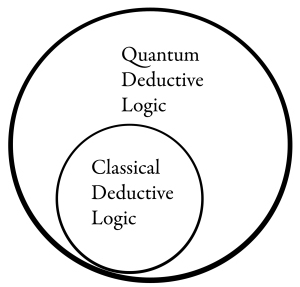
Classical logic is a special case (subset) of quantum logic. Illustration from Cynthia Sue Larson’s paper, Primacy of Quantum Logic in the Natural World.
I published a paper, Primacy of Quantum Logic in the Natural World, pointing out something similar to what the person who emailed me is saying–that we need true quantum logic, and not warmed-over classical Boolean logic approaches that won’t ever get to the heart of the essence of true quantum logic and phenomena. As I explain in my paper, quantum logic and phenomena appears to be the larger set within which classical physics and logics resides, and not the other way around. It is thus incumbent on us to pay better attention to the natural world in order to learn to recognize the natural order of quantum logic all around us, including occasional evidence of reality shifts and quantum jumps demonstrating Evidence of Macroscopic Quantum Phenomena.
Quantum computing represents the beginning of a truly new form of technology, thus indicating that we’re now entering the Quantum Age. The aspect of quantum computers I find of secondary interest is that in order to build quantum computers, we require quantum phenomena occurring on a macroscopic scale, as well as a true understanding of quantum logic. Thanks to the work of researchers in the fields of quantum biology, quantum cognition, and quantum cosmology–such as Johnjoe McFadden, Jerome Busemeyer, and Yasunori Nomura who I’ve interviewed in my blog and my Living the Quantum Dream radio show–we can now start to recognize that Nature is already utilizing quantum logic, and Nature already shows evidence of quantum phenomena occurring on a macroscopic scale. The photosynthesis of plants has been proven to be a quantum process happening in a warm, wet, “noisy” biological environment where such things “weren’t supposed to happen,” yet clearly they are.
And fortunately for us, it increasingly seems more and more clear that rather than living in a binary, limited, boundary-constricted world—the natural world is likely much more unrestricted, open, and quantum in every way.
Here is a short video summary of some of the points in this article, filmed on location in San Francisco where I met my friends for lunch:
___________________________
 Cynthia Sue Larson
is the best-selling author of six books, including Quantum Jumps. Cynthia has a degree in Physics from UC Berkeley, and discusses consciousness and quantum physics on numerous shows including the History Channel, Coast to Coast AM, the BBC, One World with Deepak Chopra, and her radio show, Living the Quantum Dream. You can subscribe to Cynthia’s free monthly ezine at: http://www.RealityShifters.com
Cynthia Sue Larson
is the best-selling author of six books, including Quantum Jumps. Cynthia has a degree in Physics from UC Berkeley, and discusses consciousness and quantum physics on numerous shows including the History Channel, Coast to Coast AM, the BBC, One World with Deepak Chopra, and her radio show, Living the Quantum Dream. You can subscribe to Cynthia’s free monthly ezine at: http://www.RealityShifters.comRealityShifters®


March 1, 2016
Noticing Alternate Histories and Superposition of States
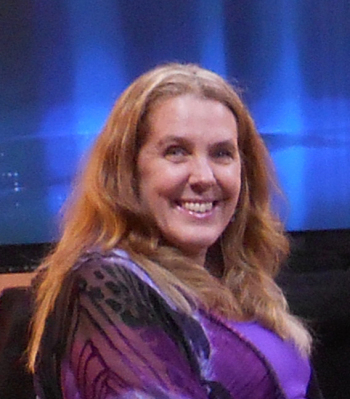 We often think in terms of quantum physics being something very complicated that we can’t understand that we don’t need to understand, since it has to do with the realm of the very small–however, recent research indicates that’s not true. A survey of physicists showed that more than two thirds of the physicists interviewed believe that you and I and everybody watching all exist in a superposition of states. So what, exactly, is a superposition of states?
We often think in terms of quantum physics being something very complicated that we can’t understand that we don’t need to understand, since it has to do with the realm of the very small–however, recent research indicates that’s not true. A survey of physicists showed that more than two thirds of the physicists interviewed believe that you and I and everybody watching all exist in a superposition of states. So what, exactly, is a superposition of states?
You may have heard of Schrödinger’s cat being alive and dead–at the same time. This was a thought experiment intended to demonstrate the ridiculous quality of quantum physics and the impossibility of these ideas applying to our everyday lives. The thought experiment consists of a box with a cat, a vial of poison, a radioactive isotope decaying at some unpredictable rate. That little bit of randomness means that we can’t predict when–or if–the device that can break open the vial of poison might activate a series of automated events resulting in the death of the cat. In this example, when we say that a quantum particle–such as the radioactive isotope–exists in a superposition of states, we are saying that it is considered to be both decaying and not decaying. And this translates to us considering that it is both activating the poison and not activating the poison–which results in us having a cat that is both alive and dead.
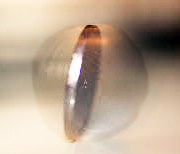 When we think of quantum particles existing in a superposition of states, we are considering them to be in a state of spin up and spin down–so they can be everything that’s possible for them to be. This is somewhat analogous to flipping a coin in the air and rather than having it fall down into a state of clearly being “heads” or “tails,” it just stays spinning. And while it’s spinning, it’s in that superposition of states. And then when someone you finally look to see what state it is in–by taking a measurement–you catch the coin, and you have a measurement.
When we think of quantum particles existing in a superposition of states, we are considering them to be in a state of spin up and spin down–so they can be everything that’s possible for them to be. This is somewhat analogous to flipping a coin in the air and rather than having it fall down into a state of clearly being “heads” or “tails,” it just stays spinning. And while it’s spinning, it’s in that superposition of states. And then when someone you finally look to see what state it is in–by taking a measurement–you catch the coin, and you have a measurement.
So the idea of all of us existing in a superposition of states, leads us to expect that we ought to be able to sometimes see signs of this. What kind of signs might you notice?
(1) Remembering things Differently
You might notice that when we talk past events, such as things that happened in childhood, your siblings would disagree with you about what happened. Perhaps such disagreements have already occurred–in which case you may have simply thought other people were mistaken, a bit mentally foggy, crazy, or that they’re lying. But instead if you think instead in terms of the possibility that they actually are experiencing a different reality, this is one way you might detect the presence of superposition of states in your life.
(2) Spontaneous Remission
Another possible way that you could see a superposition of states is by experiencing amazing, miraculous kinds of spontaneous remission of illness or disease. Even if you or those you know haven’t had miraculous recoveries, perhaps you may have sometimes noticed times when you’ve started to catch a cold, and suddenly been completely well.
(3) Different Movie Dialogue, Books, and Song Lyrics
A third way you might observe the presence of alternate histories and a superposition of states would be if you’ve noticed changes in familiar songs, movies, or books. This might have come to your attention since you’ve read them before and you’ve watched them before, but now the words or plot is different. And you might think, “Well, I just didn’t remember it correctly.” But another possibility to consider is that you did remember it correctly. And now it’s “always been” some other way according to official historical records.
Take a fun pop quiz when you watch this video, to see some alternate histories that many people have recently reported experiencing:
When talking about these kinds of examples, people sometimes think they are experiencing what they call an “alternate timeline” or an alternate universe. What I’m suggesting is that it’s a natural part of daily life to exist in a superposition of states. In my book, “Quantum Jumps,” I describe how this is part of the way that our senses work. The very small effects of quantum processes like quantum teleportation happening inside our nose allows us to distinguish two identically-shaped molecules, such as Hydrogen from Deuterium, even though they are the same shapes. This quantum teleportation “swipe model” of olfaction makes more logical sense than the “square peg, square hole / round peg, round hole” theory of smell which is not nearly so predictive nor descriptive of what we actually observe. So even though the molecular shape of two molecules such as Hydrogen and Deuterium is identical, their smells can be different because of the excitation of the electrons in the nose receptacles.
All our senses appear to have a quantum quality to them. This is also the way birds, such as the European Robin that I talk about in Quantum Jumps, navigate better by day than night, because they notice how free radicals from photons in the sun are deflected differently in response to Earth’s magnetic field. Another example of macroscopic quantum effects occurring in nature include photosynthesis, which absolutely has been mathematically proven to be a quantum process.
These quantum phenomena are happening in our bodies, they’re happening in nature. And everywhere we look, the things that we want to find to put into our quantum computers are already here in nature. Nature’s already doing this. We are even thinking and remembering things in a quantum cognitive fashion. We’re not illogical the way a lot of psychologists used to think–that if you asked questions out of sequence, people give different answers. And actually, this is what you’d expect a quantum computer to do. Because, when you ask the questions in a different sequence, the relationships change. And this is the way our memory works–according to quantum processes and quantum logic, rather than classical logic. There are so many different fields of science showing the same thing right now–that quantum is everywhere.
So when you notice alternate histories, you can start talking about the idea of alternate histories and superpositions of states with people. And when you find yourself disagreeing about what happened many years ago, keep an open mind and an open heart, that people actually experience things differently. So we can have different histories, and this is something that is part of quantum logic–which I love.
We often think of logic as being something associated with Mr. Spock from Star Trek, who says, “This is logical,” or “This is illogical.” And we think of it when we have computer systems, because they use logic gates. They have AND, OR, and NOT logic gates. And for quantum computers, we’ll also be using AND, OR, and NOT logic gates–but a whole bunch more gates, as well. And two-way through time, two-directional gates. So this is a way of looking at that superposition of states and the way nature solves problems is kind of like by running all the paths through the maze simultaneously and choosing an optimal path. And this is what we’re going to be learning to do with quantum computing. I’m suggesting we can use this in everyday life. Just like we now use a lot of terminology from classical computers, we talk about “downloading” some information, we talk about the way we communicate and get that message through to someone.
With quantum computing, we’re going to start getting some new ideas about these different possibilities that are already out there–they all exist in the field of possibility. It matters tremendously our attitude, and all the things the spiritual great teachers have taught us about staying positive, asking that question that I love so much, “How good can it get?” Really keeping yourself in an uplifted, relaxed and aware state, so you don’t get burdened by your own stories, and what you believe to be true. Because when you’re thinking in terms of a quantum reality, the facts actually do change.
And so rather than fixating on something, like, “I know it happened this way,” we’re getting to a place where we can be more in a feeling state; more in an aware state. Just being in this present moment now, you hear a lot of consciousness teachers talking about.
Quantum is the definition of things that are quantized or almost like block-like. When we feel it, we can feel the wave-like quality of it as well. So we can feel the vibe of it, the energy of it. And this is what happens in nature when some flocks of birds, such as starlings, fly together–exactly like a quantum liquid. They fly simultaneously, all adjusting their flight paths exactly at the same moment. There is no gradual adaptation from bird to bird of a change of direction–all birds simultaneously change direction together as one. And that’s exactly what quantum liquids do.
We can see evidence of alternate histories and superposition of states in nature all around us. And it’s completely natural. It’s not weird. It’s not difficult. It’s not hard. You don’t need to puzzle through quantum physics equations or math, because plants don’t do that, yet they photosynthesize with amazing efficiency. We can benefit from the primacy of quantum logic and phenomena occurring in nature as evidenced by alternate histories, by knowing that what we need is always there.
___________________________
 Cynthia Sue Larson
is the best-selling author of six books, including Quantum Jumps. Cynthia has a degree in Physics from UC Berkeley, and discusses consciousness and quantum physics on numerous shows including the History Channel, Coast to Coast AM, the BBC and One World with Deepak Chopra. You can subscribe to Cynthia’s free monthly ezine at: http://www.RealityShifters.com
Cynthia Sue Larson
is the best-selling author of six books, including Quantum Jumps. Cynthia has a degree in Physics from UC Berkeley, and discusses consciousness and quantum physics on numerous shows including the History Channel, Coast to Coast AM, the BBC and One World with Deepak Chopra. You can subscribe to Cynthia’s free monthly ezine at: http://www.RealityShifters.comRealityShifters®


February 10, 2016
Conversations with Edgar Dean Mitchell
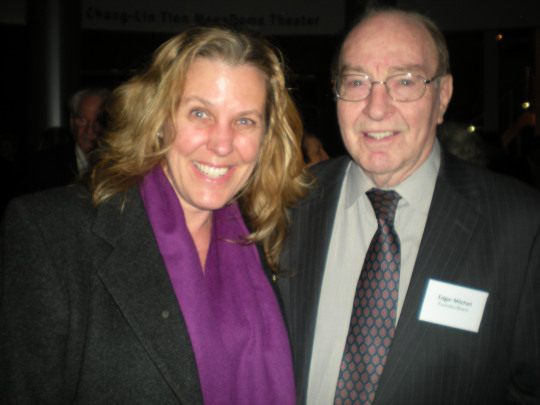
Cynthia Sue Larson and Dr. Edgar Mitchell at an IONS event in February 2010
One of my first and most influential mentors as an author and consciousness researcher has been Edgar Dean Mitchell, the sixth man to walk on the moon, founder of the Institute of Noetic Sciences (IONS), and author of Psychic Exploration and The Way of the Explorer.
I felt blessed to be able to see Dr. Mitchell in person at an IONS event in California in February 2010, where he was the guest of honor. I loved chatting with Edgar that chilly evening at the Chabot Space and Science Center in Oakland about the remarkable speed of technological advances over the past hundred years. He told me how amazing it is that his grandfather had crossed the United States of America in a covered wagon, his father was born soon after the Wright brothers made their historic first flight, and then Edgar walked on the moon and made it safely back home to Earth on Apollo 14. This was even more amazing, because Edgar’s Apollo 14 mission immediately followed the nerve-wrackingly problematic Apollo 13.
I first got to know Dr. Mitchell via email correspondence that began sixteen years ago, in March 2000. When we first began our correspondence, we commiserated about the challenges of the publishing world, and shared our ideas regarding the connection between consciousness and the physical world. Dr. Mitchell provided me with his honest assessment of my manuscripts, and helped me envision a positive future for humanity on our beautiful blue-green planet, Earth.
“We went to the moon as technicians; we returned as humanitarians.”
I was moved by the way that Dr. Mitchell had a positive vision for humanity that he shared through his commitment to creating an organization dedicated to exploring consciousness, at the Institute of Noetic Sciences. He frequently referred to the epiphany he’d had while in space, returning in his Apollo capsule to the Earth from the moon, as he looked up in the sky to see a full Earth. He describes in The Way of the Explorer that at that moment he felt, “I am one of a growing handful of human beings to have seen the Earth from the point of view of an extraterrestrial. In the heavens there is no up and down, no east or west. Earth is but a beautiful blue speck in the midst of a vast emptiness marked by luminous celestial bodies. We inhabit but one of those celestial bodies; one of the most organized-for all we know.From the heavens, in 1971, the Earth looked peaceful and harmonious, but of course all was not as it appeared. Conflict that threatened our very survival lay below. Weapons were poised, ready to annihilate life as we knew it at a moment’s notice; environmental crises were lurking just beyond public awareness. The common root of these mushrooming dilemmas, I believe, has been conflicting, out-dated, flawed ideology and dogma, with roots in antiquity.”
_______________________
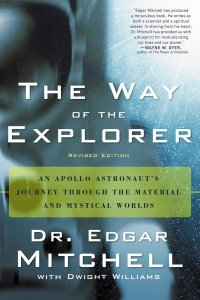 On the Difference Between the Map and the Territory
On the Difference Between the Map and the Territory
While Dr. Mitchell and I didn’t always see eye-to-eye, we certainly shared a mutual love for exploring the nature of consciousness. We both had witnessed experiences of mind-matter interaction which we wrote books about, and Dr. Mitchell on occasion would remind me of the importance of always remembering that the map is not the territory. He describes what he means by that in The Way of the Explorer, where he says, “This leads to the point that our beliefs are our map of reality. We do not perceive reality directly, but only the information our senses present to the brain at any given moment, which is then compared with the existing remembered experiences to obtain meaning. Because this map is the only reality we humans know, we often make the mistake of thinking that our map is reality itself, when in fact it is just an incomplete portrait painted from memory.”
Dr. Mitchell viewed psychokinetic mind-matter effects to be a way of managing patterns of energy that we would consider to be information, and he considered epiphanies–such as the one he had in space, and the sort of experience that can transform skeptics and “non-believers” to suddenly become concerned with spirituality and the nature of consciousness–to be “an abrupt organization, or reorganization, of information in a way that produces new insight at the level of conscious awareness.”
Edgar and I shared a common view of the role of beliefs for humankind. He writes in The Way of the Explorer, “This leads to the point that our beliefs are our map of reality. We do not perceive reality directly, but only the information our senses present to the brain at any given moment, which is then compared with the existing remembered experiences to obtain meaning. Because this map is the only reality we humans know, we often make the mistake of thinking that our map is reality itself, when in fact it is just an incomplete portrait painted from memory.”
_______________________
Within a couple of years after I got to know Edgar, he informed me that after receiving a medical diagnosis that he had cancer, he’d opted to go the natural/alternative healing route rather than standard “slash or burn.” Edgar told me that the IONS board had surprised him in March 2002 with an offer to do a shamanic style healing ceremony for him, which he agreed to. He wrote to me, “I had been on the giving and observing end of such efforts many dozens of times, but never the recipient. What a wonderful experience. We did do some shape shifting!! Subsequent high definition ultra sound sonogram showed the malignancy was gone. I trust that by some diet and life style change, meditation and such wonderfully good thoughts from folk like you that we can keep it that way. Thank you again for your kindness, love and caring.”
I was immensely grateful to hear this good news that one of my heroes and mentors was able to walk his talk and experience for himself the healing power of positive shared intentions, energy, and consciousness.
_______________________
On the Matter of UFO Disclosure
Dr. Mitchell grew up within 40 miles of Roswell, New Mexico, in a small town where the old-timers talked about what they’d observed. Though Edgar never mentioned to me any direct experience that he’d had with UFOs or extra-terrestrials, he did tell me that with regard to the matter of UFO disclosure, “Press has called me on couple of points, to which I have responded, but I >do concur this subject should be opened up and obfuscation stopped.”
_______________________
On Consciousness & Reality
Dr. Mitchell was a marvelous mentor for me, through his creation of IONS, his excellent writing, and his willingness to converse with me about his thoughts on the topics of consciousness and reality. He was a proponent for quantum holography being the basis for consciousness and mind-matter effects. Here are a few highlights excerpted from my emails with Dr. Mitchell in which we share our thoughts about consciousness and quantum physics:
Edgar Mitchell (1 April 2000): The Bohmian approach that Sarfatti uses and calls post quantum mechanics has a lot of merit, but consciousness events only reach maturity in the complexities of group theory and Lie group algebras with macroscale objects, not theories of individual particle (although the phenomenon must find its antecedents at the particle levels).
The fact that “information” is now finding its rightful place in physics, on a par with energy, as I suggested in “Explorer”, is being anchored by the quantum hologram research which is an information mechanism that allows one to say that the quantum hologram is the wave side of the wave particle duality for macro scale objects–it is non local, geodesic form (3 dimensions) that carries the event history of the macro scale object in its phase relationships, and remains in phase conjugate adaptive resonance not only with its associated object but can be perceived nonlocally by other sensing objects that can create the phase resonance relationships.
If we begin to understand that “information” in form of the quantum hologram is nature’s answer to quantum nonlocality in the macroscale world, then we are getting close to why we have subjective experiences. Nonlocality is the key that no one really understands well,– yet. All these weird “realities” you are discussing have a nonlocal component.
Cynthia Sue Larson (4 April 2000):
I just finished reading your excellent article titled, “Nature’s Mind: the Quantum Hologram.” This article is the most coherent and convincing case I’ve yet seen for the quantum holographic model, and one of the best papers I’ve ever read on the subject of consciousness. Your paper seems to effortlessly weave together current threads of thought from recent research, making for very easy reading. I am quite impressed with it, and very thankful to you for sharing it with me!
I am also pleased to see that you included reality shifts in your paper as the “more puzzling” case for creating remote physical effects in inanimate objects (and I presume you’d also acknowledge for animate beings as well). While we may not yet understand the
energy transfer mechanism for these shifts in macro reality, I am hoping that a better understanding of clusters of entangled quantum particles… and also a better understanding of string theory, with it’s many “curled” dimensions… will soon provide us with a better idea of what this mechanism might be.
I am feeling the greatest sense of optimism about the physics experiments being conducted to show how entangled pairs and clusters of quantum particles move simultaneously across great distances of space. Perhaps we’ll soon see that there are similar connections across time. The beauty of the quantum holographic model is that it provides us with a very clear visual analogy for how these unseen forces may be operating around us.
I also am very curious to know how we might expect reality to behave when we begin with the assumption that there are ten dimensions around us… most of which are tightly curled and for the most part, invisible to our normal senses. An uncurling of curled dimensions simultaneously in two locations may be at the heart of the mysterious mechanism behind reality shifts.
I also greatly enjoyed your shorter article, titled “Space Flight as an Anticipatory Computing System”. This article was wonderful, because of the powerful human interest component. It’s always a sheer delight to read about your experiences with the Apollo missions!
Edgar Mitchell (4 April 2000):
Cynthia, thanks for the nice comments. You are right, there is still a lot of mystery going on at that level. But let me give you my slant on it.
1) the inanimate object case is even more tricky than the living systems case. Why?, Because it is easier to imagine (picture) resonance between two living objects, than between vastly dissimilar objects–humans and rocks, for example. With humans, for example, if resonance is established, information may automatically be transferred without significant energy exchange, and the energy of the recipient is used for healing (for example)–just like in the case of a musical sound causing a glass to break at a distance—–it is not the energy transfer that is important, but rather the frequency that causes the glass to resonate faster than the chemical bonding of the glass can tolerate.
So thought can create a resonance at a distance so that information is available. However, physically, displacing an macro object in 3 D space seems, (at first glance) a little more difficult because we are accustomed to thinking that it requires energy to move things around.
However, particle nonlocality, between similar particles, is also just resonance–but they are similar particles and it doesn’t matter which one is A or B, they are each equally causal and entangled with the other. How that same principle applies to objects of dissimilar scale size is still a bit murky.
Perhaps you are right that multidimensional strings may provide some answers. I will state strongly that I am not convinced about that, as I think multidimensional concepts, while exceedingly brilliant mathematics, elegant and satisfying, can’t really be validated. Even Einstein’s curvature of space is really more easily explained by a non-isotropic, non- homogeneous Zero Point Field. At least at the macro level, there is nothing to curve. I believe we are still in large measure confusing the map with the territory in physics. But you are completely correct, nonlocality, resonance and entanglements are clearly the subjects for the next few years of study.
Cynthia Sue Larson (7 April 2000):
Thank you also for sharing your perspective on difference between inanimate and living systems reality shifts. I certainly feel much more affinity for people and animals and plants I love than for inanimate things, and the reality shifts I’ve managed to “perform” have so far been confined to this realm of those I love who are alive. On the other hand, I know of people who routinely shift reality with inanimate objects (such as spoons), so I’m still investigating both kinds of reality shifting.
I definitely agree with your sense that it’s important to not confuse the map with the territory being explored! That’s a great analogy, and so true. Very often it’s hard to notice when our own beliefs and assumptions are interfering with perceiving reality as it truly exists. The very words, ideas, and metaphors we use for comprehending the world can hamper our complete understanding by unnecessarily limiting our world view.
I’m intrigued by your sense that we may find it difficult to experimentally validate string theory. I’m feeling optimistic about that right now, since I’ve heard that there are currently a few possible ways that such experiments could be conducted. One idea, proposed by Giovanni Amelino-Camelia of the University of Oxford and the Institute of Physics in Neuchatel Switzerland, suggests that gamma-ray bursts can be used to check whether the speed of light in a vacuum depends on its wavelength. Special relativity theory states that light has the same speed in a vacuum regardless of wavelength… so if wavelength-dependent speed of light is observed, we would be witnessing a level of physical law more fundamental than relativity.
A second way to experimentally validate string theory would be to detect minute variations in gravity. We’d look for a time difference in the range of 10 microseconds for gamma rays that have traveled for some 10 billion years… which our current instruments may be able to detect.
Yet another way that string theory may be able to be proven is if we can use the Large Hadron Colliders at CERN to make strings… taking advantage of the lower unification scales which would be expected from the ten dimensions, since the new dimensions could lower both the Grand Unification scale (as shown recently by Keith R. Dienes, Emilian Dudas and Tony Gherghetta of CERN) and the Planck scale (according to Arkani-Hamed, Savas Dimopoulos of Stanford University and Gia Dvali of the Abdus Salam International Center for Theoretical Physics in Trieste).
Perhaps these ideas for testing string theory won’t work out, but the fact that there are so many experiments being considered is quite heartening to me!
Edgar Mitchell (7 April 2000):
I need to correct my self. I agree with what you said about the experiments to validate string theory through speed differential of different light wave lengths, etc. I do agree that strings may be the form of basic matter. I am only objecting to the “interpretation” of the mathematics as multiple physical dimensions, just as I object to the Copenhagen and Many worlds “interpretations” of the equations of classical quantum theory; and just as I (now) agree with Halton Arp is his dissent from the Big Bang interpretation of red shift as being the sole reason that we observe red shift.
Mathematics and certain basic theories can be and must be validated by experiments as “fact”. However, interpretation of what it all “means” usually is a map masquerading as a territory. And unfortunately, that happens continuously, and is communicated to the less knowledgable public which does not have the means to understand the errors.
_______________________
At the time of Edgar’s death, we had just been planning for him soon to be a guest on my radio show, Living the Quantum Dream. I miss Edgar Mitchell tremendously, though I am grateful that his legacy of thoughts, ideas, and community of consciousness researchers lives on. Thanks to Edgar’s foresight in recognizing a continuing need to explore not just the far reaches of space–but also the far reaches of mind–our world is an immeasurably better place for having had him in it.
___________________________
 Cynthia Sue Larson
is the best-selling author of six books, including Quantum Jumps. Cynthia has a degree in Physics from UC Berkeley, and discusses consciousness and quantum physics on numerous shows including the History Channel, Coast to Coast AM, the BBC and One World with Deepak Chopra. You can subscribe to Cynthia’s free monthly ezine at: http://www.RealityShifters.com
Cynthia Sue Larson
is the best-selling author of six books, including Quantum Jumps. Cynthia has a degree in Physics from UC Berkeley, and discusses consciousness and quantum physics on numerous shows including the History Channel, Coast to Coast AM, the BBC and One World with Deepak Chopra. You can subscribe to Cynthia’s free monthly ezine at: http://www.RealityShifters.comRealityShifters®


December 4, 2015
Quantum Jumps and Changing the Past
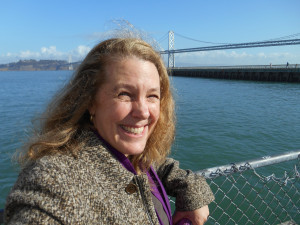
Cynthia Sue Larson
Can we really go back in time and relive past events?
I get several emails a month from people expressing regret for previous events, along with a desire to fix the present by changing the past. A lot of people would really love to experience a do-over–to get a fresh start and new opportunity to re-experience previous life events, this time making different choices and experiencing different outcomes.
These emails come to me thanks to my having posted videos and articles about changing the past, which some people interpret as suggesting that they can literally learn to jump back in time to relive and re-experience events. I have answered many of these queries in the question and answer section of the RealityShifters ezine, explaining that while evidence exists suggesting that the past can be influenced by future observations, this is not an area in which I’ve witnessed people demonstrating time traveling proficiency.
We can experience many possible realities
What I have experienced, and what many other people have experienced, is a change in our memories compared with what appears to be supporting historical evidence of the moment. Such discrepancies can be indicative of the presence of superpositions of states–in which many possible realities exist as possibilities side-by-side. Not only do possible realities exist for this present moment and future moments, but also for our past.
We can witness superposition of states in our physical lives through observing apparent changes to history–when we become aware that some kind of change has occurred, such that a spontaneous remission from disease has occurred, or some other kind of alternate history is being experienced. This is the kind of reality shifting I write about in my books, Reality Shifts and Quantum Jumps, rather than going back in time with the intention to rectify past events so everything can be more perfect right now.
Go with the flow, with optimistic acceptance
When we come to some degree of acceptance for what is going on in our lives right now with the additional awareness that we exist in a superposition of states while we maintain an optimistic perspective, we are able to “go with the flow,” while at the same time enjoying support from those like-minded individuals who care about what we care about. With such support, seen or unseen, we can ask together,
“How good can it get?”
___________________________
 Cynthia Sue Larson
is the best-selling author of six books, including Quantum Jumps. Cynthia has a degree in Physics from UC Berkeley, and discusses consciousness and quantum physics on numerous shows including the History Channel, Coast to Coast AM, the BBC and One World with Deepak Chopra. You can subscribe to Cynthia’s free monthly ezine at: http://www.RealityShifters.com
Cynthia Sue Larson
is the best-selling author of six books, including Quantum Jumps. Cynthia has a degree in Physics from UC Berkeley, and discusses consciousness and quantum physics on numerous shows including the History Channel, Coast to Coast AM, the BBC and One World with Deepak Chopra. You can subscribe to Cynthia’s free monthly ezine at: http://www.RealityShifters.comRealityShifters®



